Or How A Librarian Gardens.
When I shared a picture of my new raised bed, set up and ready to plant, I had a few people ask about it or say it looked good, and as I found this book incredibly helpful, I thought I’d write about it how I used it to set up my own bed. This isn’t really a review of the book, as I took it as a blueprint rather than following it exactly, but in many ways, that’s my review. This book is great, and it’s helped me put a raised vegetable together in a way that makes sense to me.
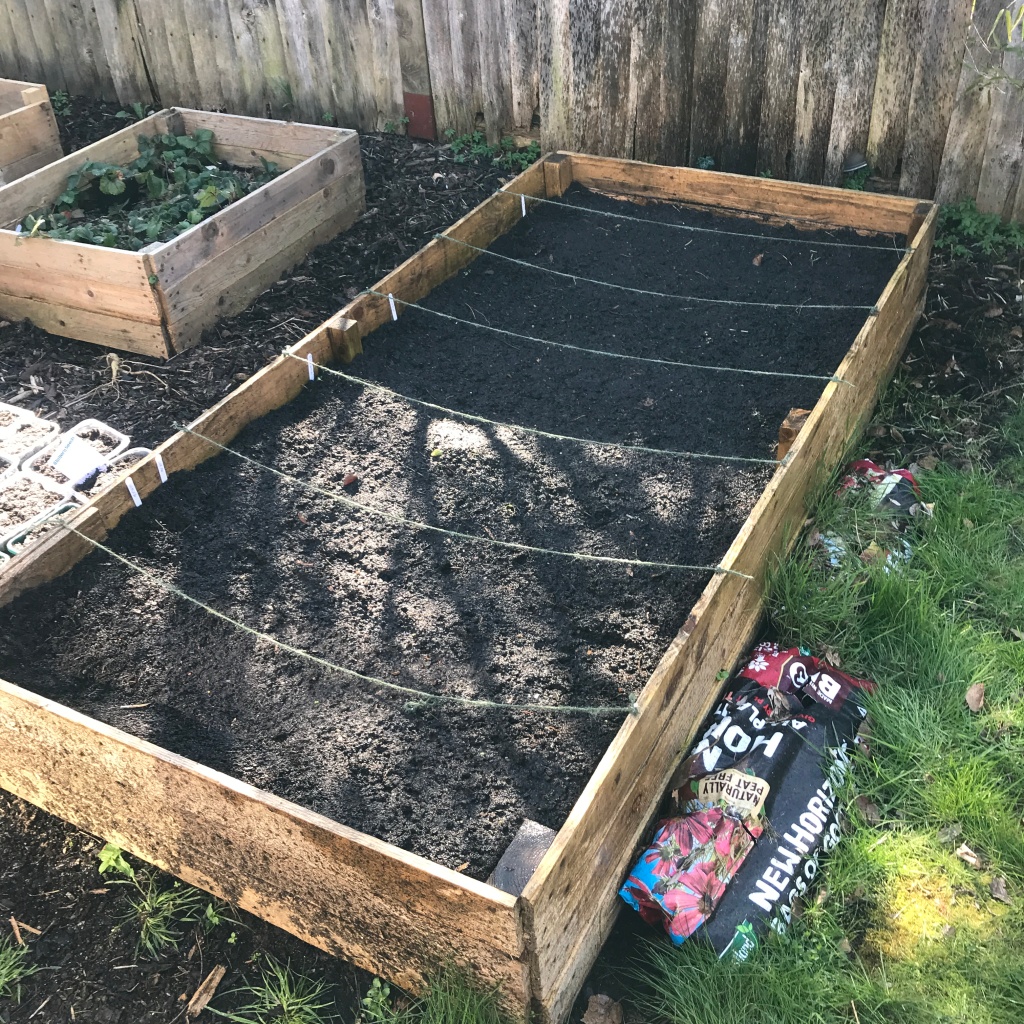
One of the things I find hard as a beginner gardener is the lack of rules. I like things predictable and structured, so that I can play around with them as I want. When you understand music, you can improvise. When you understand gardening, you can make it up yourself. And when you know nothing, you can do things in joyful ignorance and see what happens. But when you know a little, and want to move into knowing more, it can be frustrating. I totally understand that gardens are at the whim of the weather, the birds, the slugs, pests, diseases and whether the seed has perished or not (I’m looking at you, last year’s spring onions). But not knowing how to even approach gardening was hard for me. I got books, I researched online, but there wasn’t anything giving me a secure “try this” that really spoke to me. Finally, all the days of carrying huge piles of books home paid off, and three books really clicked in my brain. More on the others another time. This book is about vegetables.

When we got back from our holiday in January, I came down with a cold which had me curled up on the sofa for a few days. I used the time to pull out my seed packets and stare at them in despair. There was so much choice, where did I even begin? If you’re someone like me, who is really good at gathering facts and so gets easily swamped by them, this book is for you. Veg in One Bed is a defined planting scheme for one raised bed for one year. That’s it, that’s the book. It’s a genius idea. There’s also advice for what to grow on windowsills indoors, general growing tips and planting advice, but its real USP is the year planner near the front.
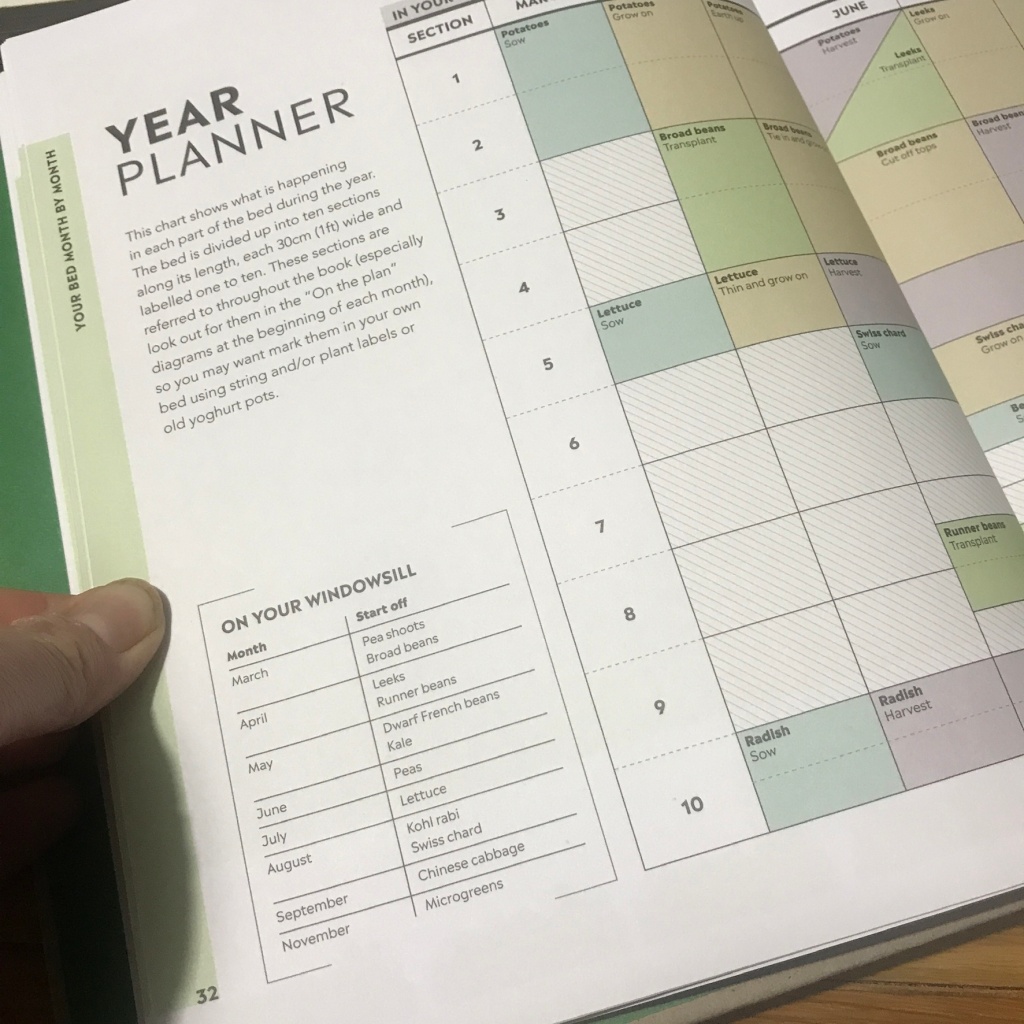
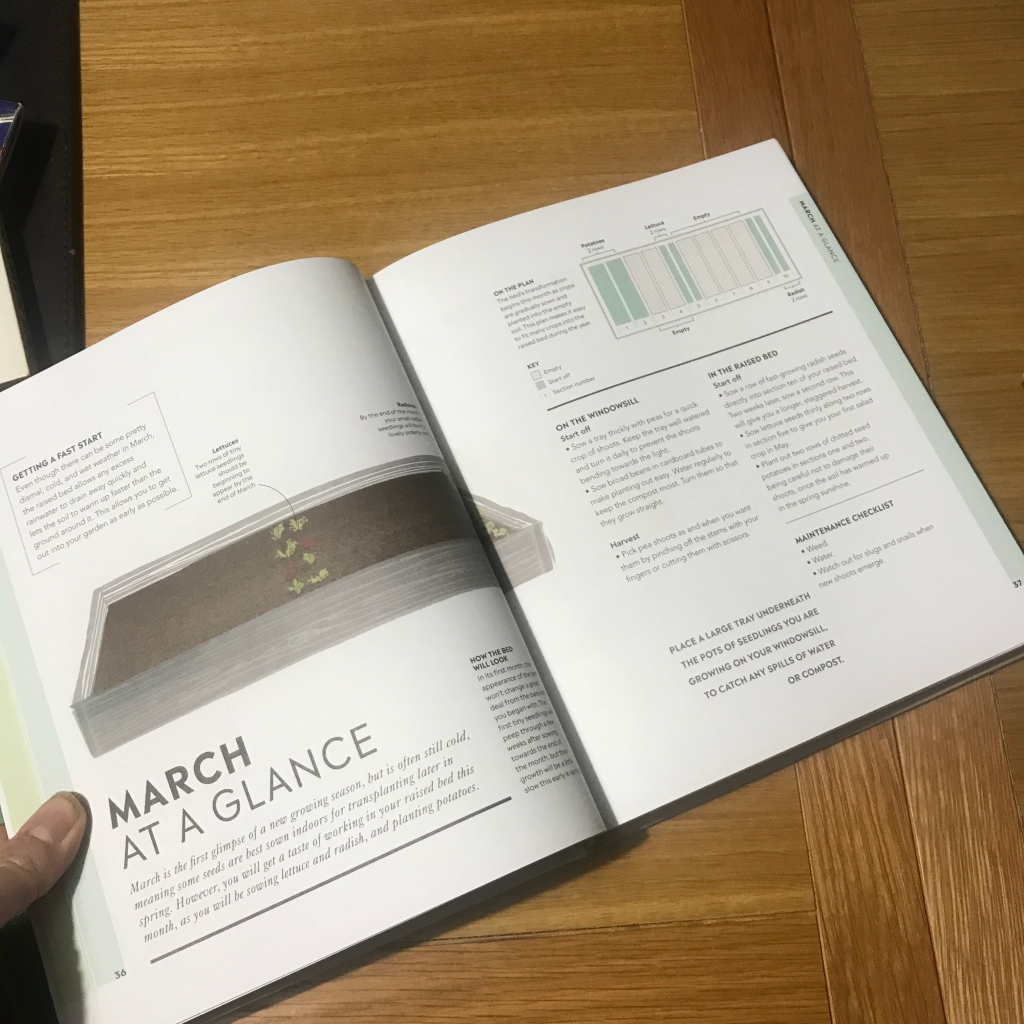
The only problem was, I didn’t have all the seeds on the list, and I really, really didn’t want to buy more. I had too many already! So I did what any librarian knows is essential. It’s not enough to just have facts. They have to be arranged in a way that makes them accessible, understandable, and usable.
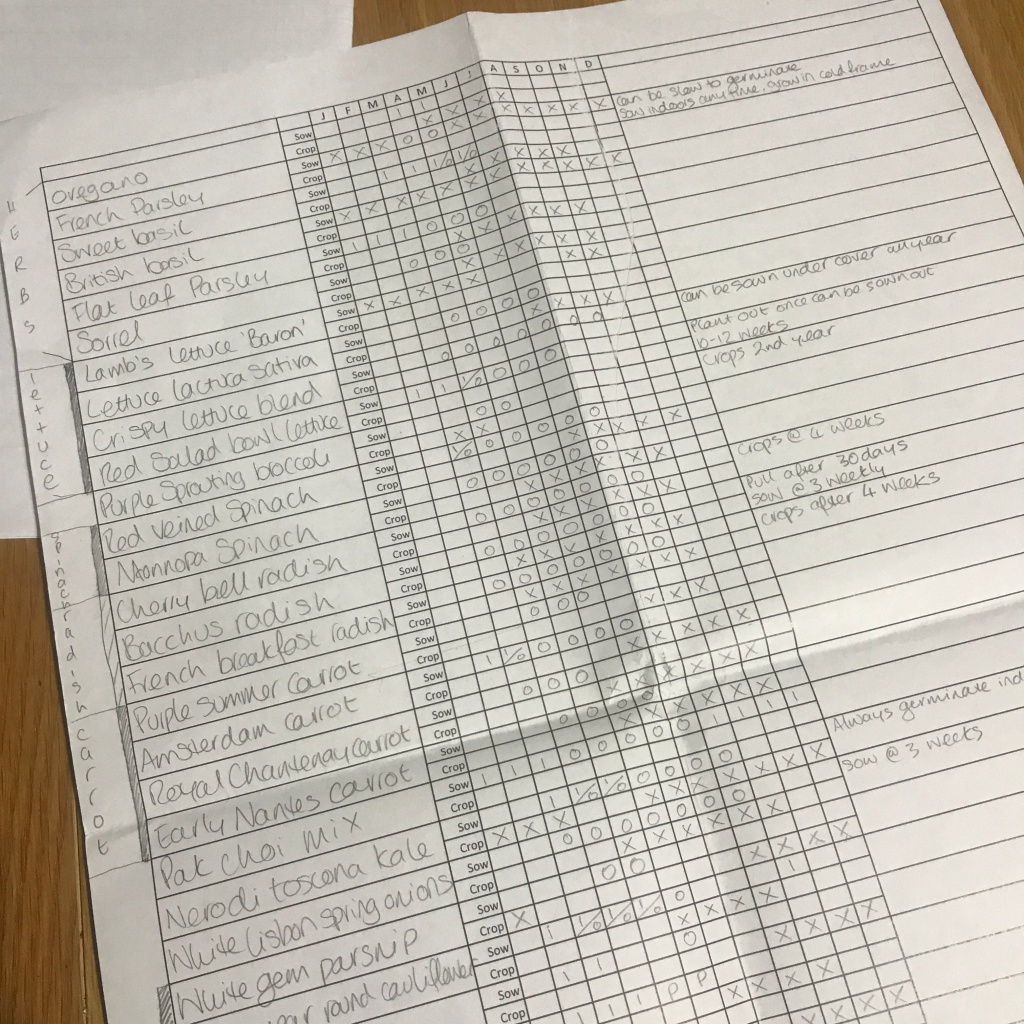
This giant chart listed all my vegetable seeds (I have another one for flowers), and I used it to match up the things that could be sown and harvested at the right times to substitute in for the ones in the book. For starters, my raised bed was only 7 ‘rows’ wide, so I ditched the potatoes and onions. For the rest, I just drew a grid and kept swapping things in and out (you’ll need a good pencil and eraser for this!) until I had a scheme that worked. That went onto a record card. Why a record card?
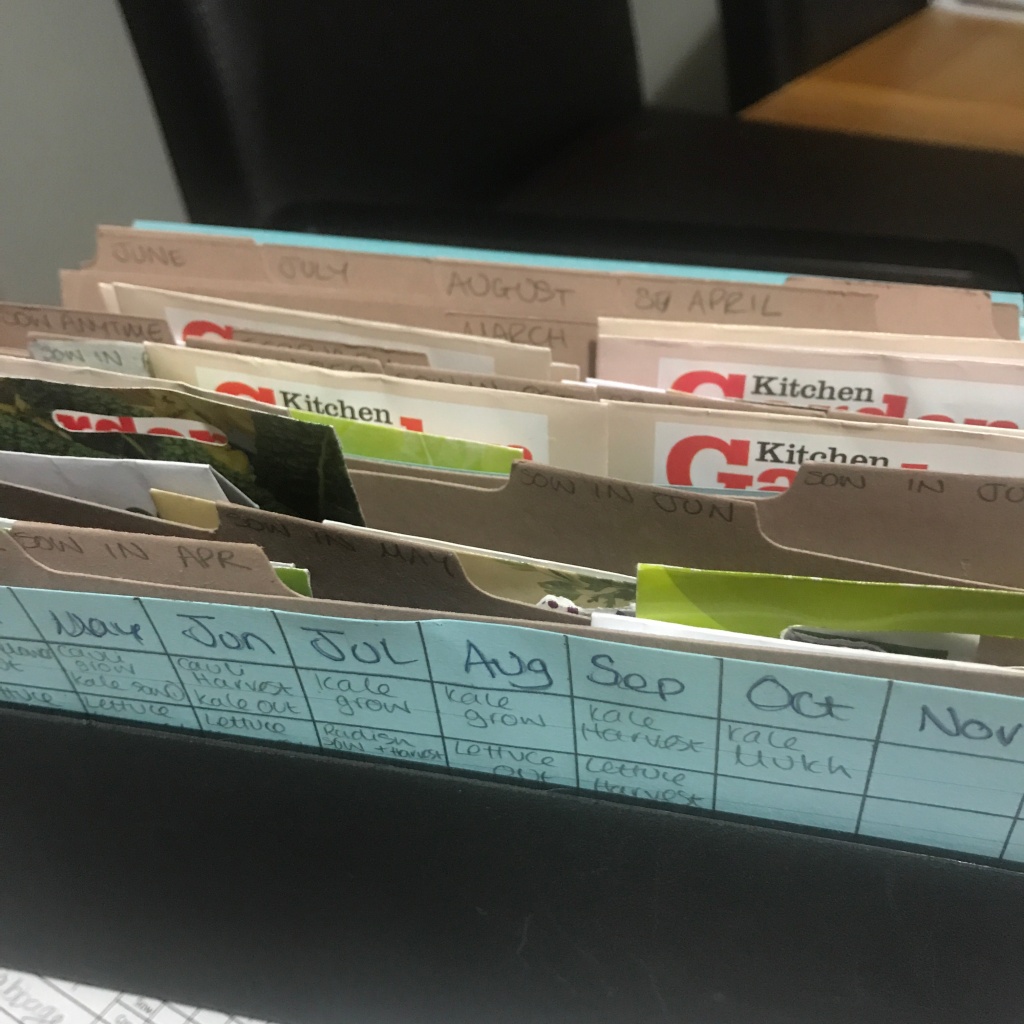
This is why. My original plan had been to get a fancy seed tin, but after trying a few, there wasn’t enough order and I couldn’t find anything. This works great. The dividers at the back are for seeds I could sow in each month, while the ones at the front are for what I plan to sow. Empty packets are dropped in the very back, so that I can reference them as the plants come up.

This approach is absolutely not for everyone. And even I understand that I need to be flexible. I’ve started 3 weeks late because even before the pandemic, I was busy with other things taking my time and energy. It was also blooming freezing and I wasn’t convinced that anything I sowed would grow! But with my plan, I feel I can improvise. So I’ve started a little late? So what? Everything will just get pushed on three weeks, and if we have a warm spell that brings everything on quickly, I’ll catch up.

I would 100% recommend this book for people who want to do *something* but are overwhelmed by choice. Too many books were either too specific (“Make this wheelbarrow arrangement”) or too vague (“choose a plant you like”). I want something that warns me things could go wrong, but gives me a baseline to start from. And this is definitely that.
Next time on Laura’s Gardening World: Seedlings!
